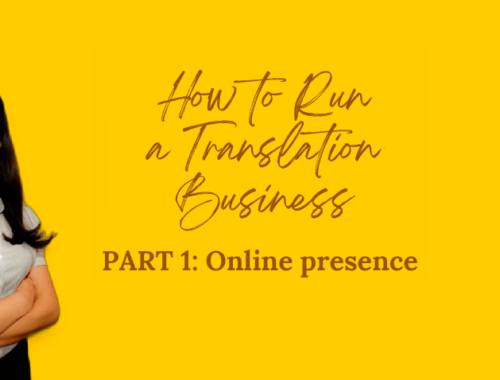
How to Run a Translation Business PART 2: Content
As you requested, I have gathered my tips for running a translation business in one place. And this is how the How to Run a Translation Business Series was created. It’s divided into five parts, each of which touches on a different aspect: online presence, content, clients, finances, and mindset. As you will see, some parts alternate with the others. For example, online presence mentions content and clients; finances are connected with clients and mindset; and mindset is connected with all of them.
The first part of the series covered online presence.
This part of the How to Run a Translation Business Series is all about content.
NOTE: As LinkedIn is the main social media channel most translators use, most tips refer to this platform.

1. Brainstorm content ideas once a month
Each month, book one day in your calendar to think about what you can post. Take a piece of paper or open a text editor. Write down all the topics that come to your mind. Don’t limit yourself.
The idea behind content planning is to create it with a strategy in mind.
2. Set aside one or two days in a month for creating content
In case of short posts, you can do it spontaneously. It’ll take you just a while to create them.
But in case of posts that are part of your marketing campaign, you should devote more time to them.

1. Each calendar entry is a content idea
You can turn into a post whatever you do as a language professional.
A translation project you’re working on or have just finished.
Your insights from a translation conference or workshop you attended.
A challenge you encountered when translating a text and how you handled it.
Technology tools you use or have heard of recently.
And not only that. Although LinkedIn is a professional business platform, it’s also a social media channel. Just like Facebook, Instagram, and Tik Tok. It means you don’t have to be serious all the time. 😉 So apart from translation-related topics, post about those not related to the industry and about your private life. For example, your interests, a trip you took, a book you have recently read and liked, etc. You can even share a photo of your family, friends, and/or pet if you want. You decide what you share.
Sharing personal content helps you connect with your potential clients.
2. Diversify your content
Share texts, graphics, and video content.
Write short and long posts (or even articles). Create polls and carousels. Host an audio or live event.
Give advice. Ask questions.
3. Create educational and informative content
Let your clients know what you do, how to do business with you, and what they can expect from you, i.e., what services you offer and what’s in it for them.
Share your knowledge. Showcase your expertise by talking about your niche, the projects you’ve completed, how you’ve handled a translation problem, etc.
4. The 80/20 rule
80% of your content should be giving (educating, sharing your knowledge). 20% of it should be selling (talking about your services and promoting yourself as a translator).
5. Recycle your content
In other words, use the same content across social media channels.
Turn a blog post into a text post or carousel on LinkedIn.
Make a video and share a transcript of it on your blog.
Record a podcast episode and share snippets of the transcript on social media.
If you use Facebook and Instagram for business purposes, take a screenshot of your post on one platform and post it on the other.
Go back to the first part of the series to know how to choose your social media channel.

You want your potential clients to see your content, so you should post when they are active on social media.
How to know it? First, change to their time zone if necessary.
Second, do tests. Post at various hours and see how much engagement you get within, let’s say, 2 hours after posting.

1. Check on all your actions once a month
Check what works and what doesn’t. If necessary, adjust your actions according to the results.
2. Be consistent in your actions and planning
Make content planning and creation a habit. Once you take control over your content, it will no longer make your head pound.
3. Have a copy of your content offline
In case a social media platform breaks down, you don’t lose everything you’ve created.
Which tip(s) have you found most useful?
Any questions about running a translation business? Ask them in the comments or send me an email (write “How to Run a Translation Business Series” in the email subject). I’ll be happy to help.
Powiązane wpisy / Related posts / Posts relacionados
Dorota
A linguist, translator with 4 years of experience, and passionate photographer and traveler. I like meeting new people from all around the world and getting to know their culture. I graduated from 3 different universities in Poland and one in Spain. At przeTŁUMACZ Dorota Oleś, I offer into-Polish translation services of English and Spanish marketing content, mainly related to sports, fashion, tourism, and hospitality. I also run a blog on which I share my insights and knowledge as a translator and linguist.
You May Also Like

How to Run a Translation Business PART 1: Online presence
30 January 2023
How to Run a Translation Business PART 5: Mindset
30 May 2023






